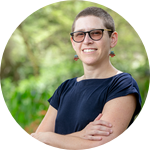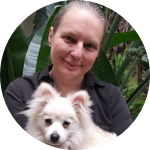About This Project
The usual practice on all commercial farms in the egg-laying industry is to cull male chicks shortly after hatching since they cannot lay eggs. Worldwide, an estimated 7 billion day-old male chicks are culled annually. Engineering an all-female breed of egg-laying chickens could put a stop to this unethical practice. This project aims to identify testes-specific enhancers for DMRT1 and HEMGN – an essential first step in creating an all-female breed of chickens.
Ask the Scientists
Join The DiscussionWhat is the context of this research?
Male chick culling by methods such as live-maceration has raised several ethical and financial concerns. Engineering an all-female breed of egg-laying chickens by removing a testes determinant could resolve this problem. Studies have shown that DMRT1 and HEMGN are testes determinants - making either promising candidates for gene-editing. However, since both genes are expressed in non-gonadal tissue as well, the disruption of either gene is expected to have undesirable effects outside of the gonads. This may be circumvented by targeting a testis-specific enhancer for either gene. This would ideally abolish the gene’s expression only in the testes, resulting in male-to-female sex reversal while leaving somatic expression unaltered.
What is the significance of this project?
Annually, an estimated 7 billion day-old male-layer chicks are culled worldwide. In the USA, 200-300 million male-layer chicks are culled yearly. It is estimated that if culling were to be abolished, it would save the egg industry approximately $500 million yearly.
In-ovo sex determination is a possible alternative, however, the process is invasive and requires expensive machinery; with no guarantee of being able to automatize the sexing process to meet industrial demands.
Future work will involve creating transgenic embryos that lack the testes-specific enhancer(s) identified from this project. Should we observe male-to-female sex reversal in the embryos, we will allow some of the chicks to hatch and examine their reproductive structures.
What are the goals of the project?
In collaboration with Dr Taylor (Crick Institute, UK), we have already identified 14 putative enhancers for DMRT1 and 3 putative enhancers for HEMGN. Our goal is to identify testes-specific enhancers for DMRT1 and HEMGN that will be used for subsequent gene-editing work. To accomplish this, we first need to create an enhancer reporter construct that is capable of testing the putative enhancers in-ovo. Next, we will test the construct in-ovo using a known enhancer (SOX10E2) to ensure that the construct is working correctly. The putative enhancers will then be inserted into the construct and tested in-ovo via electroporation. We hypothesize that testes-specific enhancers will only be active in testicular tissue at E4.5 (DMRT1) and E5-5.5 (HEMGN).
Budget
A traditional cloning approach involving the use of restriction enzymes will be used to assemble the enhancer reporter construct. Where necessary, fragments will be PCR amplified. Once the construct has been assembled, the major components (promoters and coding sequences) will be sequenced to ensure that no deleterious mutations were introduced during the cloning process. The SOX10E2 enhancer will be PCR-amplified, directionally inserted into the enhancer reporter construct, sequenced and functionally tested in-ovo as described by Betancur et al., 2010. This will require primers, a high fidelity enzyme, restriction enzymes and cloning supplies.
All of the putative enhancers will then be PCR amplified (with a high fidelity enzyme) using gDNA from chick embryos (already isolated). The putative enhancers will be directionally cloned into the enhancer reporter construct using AscI and PacI, sequenced and tested in-ovo.
Endorsed by
 Project Timeline
Project Timeline
6-8 weeks will be used to get the necessary supplies and to assemble the enhancer reporter construct. Approximately 4-6 weeks will be used to insert the SOX10E2 enhancer into the enhancer reporter construct and test it in-ovo. 8 months will be dedicated to cloning the putative enhancers into the enhancer reporter construct and testing them in-ovo. The findings will then be written up and submitted for publication by the end of May 2023.
Apr 04, 2022
Project Launched
May 04, 2022
Project launch
Jun 20, 2022
Completed the enhancer reporter construct
Jul 18, 2022
Completed testing the SOX10E2 enhancer in-ovo
Mar 20, 2023
Completed testing DMRT1 and HEMGN putative enhancers in-ovo
Meet the Team
Zane Oberholzer
I completed my undergrad studies at the University of the Witwatersrand, during which I was invited to join the Golden Key International Honour Society for being in the Top 15% of my class. I remained at the University of the Witwatersrand to complete my MSc (Master of Science in the field of Genetics and Developmental Biology). My MSc project attempted to address the practice of male chick culling by investigating the role of a W-linked factor that may be implicated in female sex determination.
I am currently a PhD candidate at the University of the Witwatersrand. My research is focusing on enhancer identification and characterization in the chick embryo that may be used for future gene-editing work. Collectively, I have 4 years of experience in the field of avian sex determination and I have experience with techniques such as molecular cloning and in-ovo electroporation.
I am passionate about this project because it has the potential to spare billions of chick’s lives; with the commercial advantage of increased egg yields.
Additional Information
Please find all the relevant ethics documents posted in Lab Note 1.
Please find additional information on the number of male chicks culled annually across different countries in Lab Note 2.
We plan to deposit the construct to Addgene (a non-profit plasmid repository) which will enable anyone to use it. All the data generated from the project will be reported in the form of publication(s) in recognized international journals.
Project Backers
- 18Backers
- 100%Funded
- $3,515Total Donations
- $195.28Average Donation


